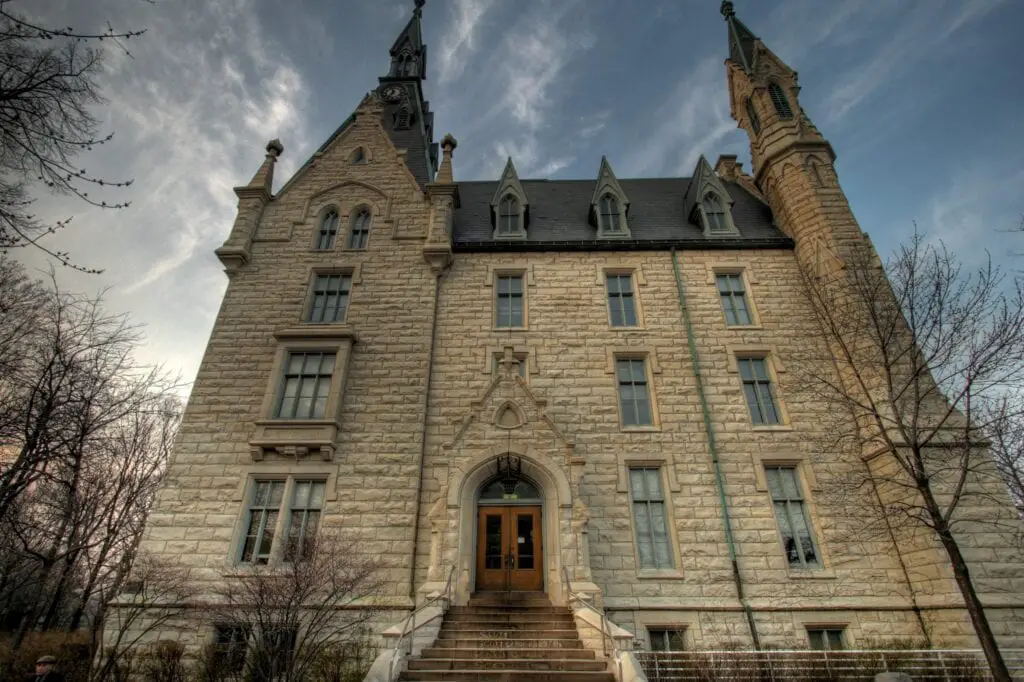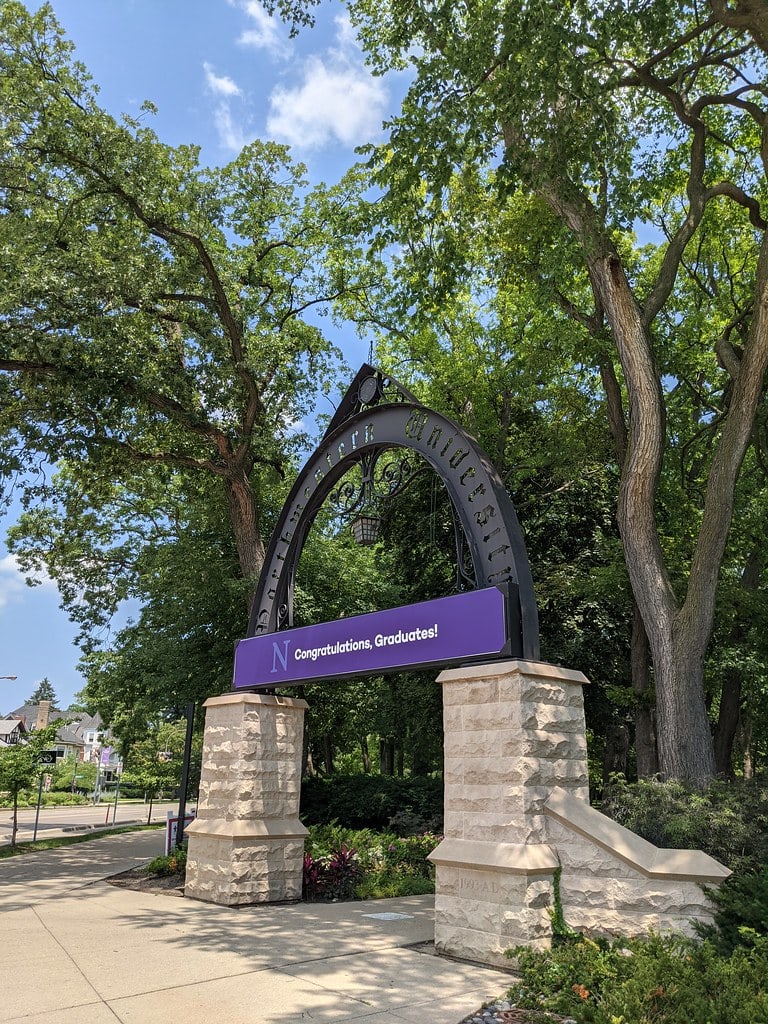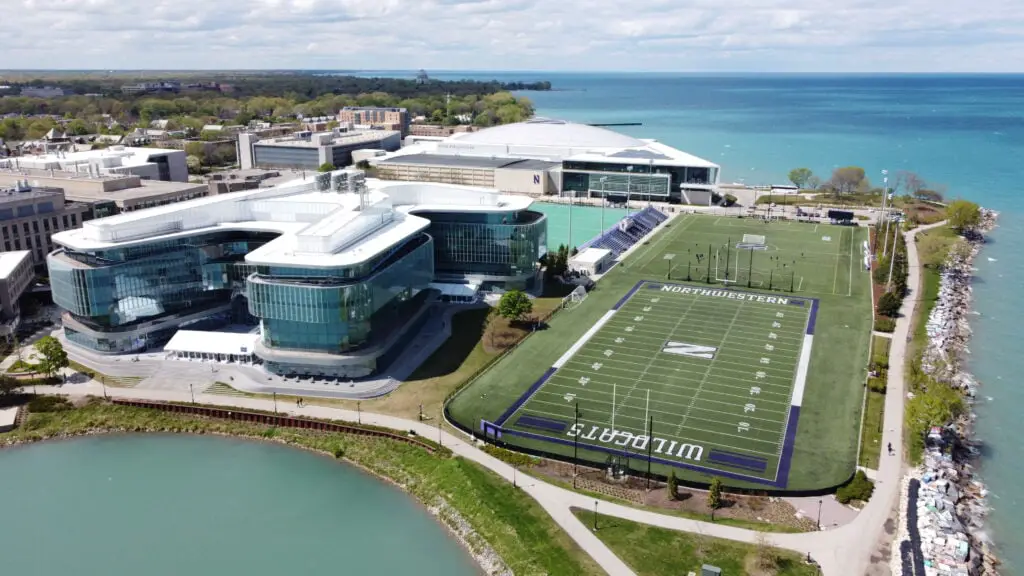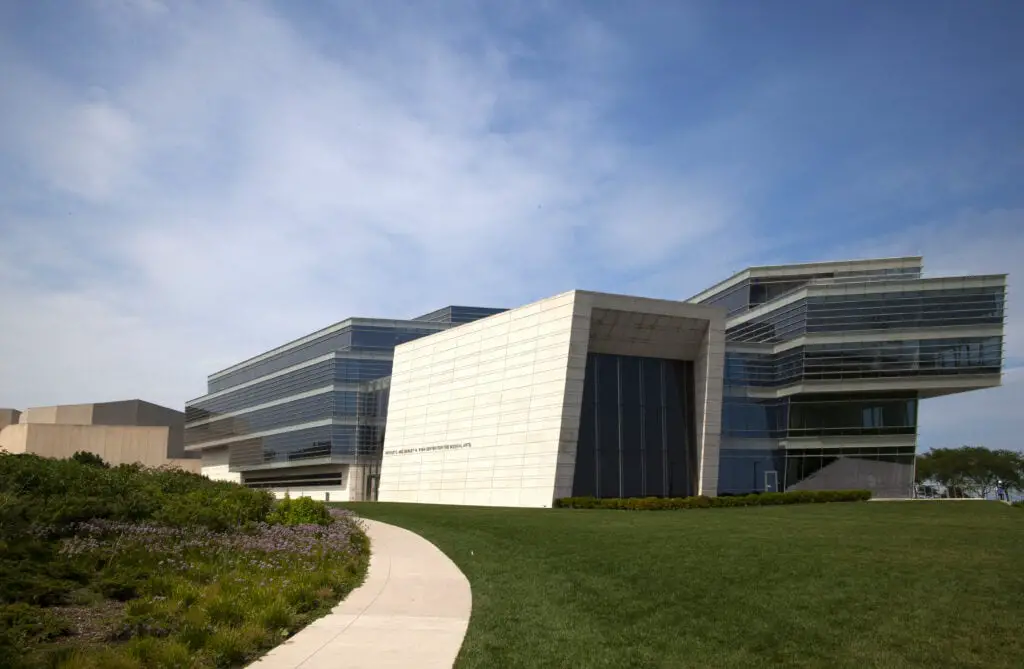The Early Years
In the heart of the former Northwest territory, amidst the hustle and bustle of the Chicago metropolitan area, in Evanston, IL, lies Northwestern University, a beacon of knowledge and innovation.
Established in 1851, Northwestern University has grown to be Illinois's oldest chartered university. It was meant to serve the former Northwest territory and has undoubtedly fulfilled its purpose.
The main campus of Northwestern University is beautifully located along the shores of Lake Michigan. The university initially comprised eleven undergraduate, graduate, and professional schools.
Among these are the Pritzker School of Law, the Weinberg College of Arts and Sciences, the Kellogg School of Management, and the Feinberg School of Medicine. Northwestern University has since established additional campuses in downtown Chicago, Coral Gables, San Francisco, Doha, and Washington, D.C.
Boasting an illustrious history and outstanding academic standing, the university commands an impressive endowment of $16.1 billion and operates with an annual budget of approximately $2.9 billion. As of Fall 2021, the university boasted a community of 23,410 students.
Recognition and Achievements
Northwestern University has a long-standing tradition of academic and intellectual excellence. This is mirrored in the achievements of its faculty and alums.
As of September 2020, the university can proudly declare that among its past and present faculty and alums are numerous heads of state, 23 Nobel Prize laureates, 2 Fields Medalists, 23 MacArthur Fellows, 44 Pulitzer Prize winners, 28 Marshall Scholars, 19 Rhodes Scholars, 94 members of the American Academy of Arts and Sciences, and ten living billionaires. Its commitment to fostering talent and innovation is further reflected in its 24 Olympic medalists.
Beyond individual achievements, Northwestern University itself has been recognized for its commitment to education. The U.S. Department of State distinguished the university as a Fulbright top-producing institution for an impressive 19th year.
Evolution and Growth
In the initial years after its establishment, Northwestern University underwent a period of significant growth and evolution. In 1869, the university built University Hall, using the same Joliet limestone as the Chicago Water Tower, one of the few buildings in the heart of Chicago to survive the Great Chicago Fire of 1871.
During this time, the Evanston College for Ladies merged with Northwestern, and the university admitted its first female students, paving the way for greater inclusivity and diversity.

This period also saw the university expand its academic repertoire by affiliating itself with existing law, medicine, and dentistry schools in Chicago. As the university's enrollments grew, these professional schools integrated with Evanston's undergraduate college.
The outcome was the transformation of Northwestern into a contemporary research university, harmoniously integrating professional, graduate, and undergraduate programs and placing equal emphasis on teaching and research.
Surviving the Depression and World War II
The turn of the century marked a period of growth for Northwestern University, becoming the third-largest university in the United States after Harvard University and the University of Michigan. The 1920s saw Northwestern establish the Kellogg School of Management and build several prominent buildings on the Evanston campus.

However, the Great Depression severely impacted the university's finances, causing a substantial decrease in its annual income. Despite these challenges, the university managed to survive this difficult period through salary cuts, a hiring and building freeze, and the launch of a new graduate program in education.
World War II brought about significant changes in the university. Enrollment dropped dramatically, but the university opened high-intensity, short-term programs that trained over 50,000 military personnel.
Northwestern's existing Naval Reserve Officers Training Corps (NROTC) program was notably beneficial during this period, training over 36,000 sailors and earning the university the title of the "Annapolis of the Midwest." This war period also saw the initiation of the Program of African Studies at Northwestern, the first of its kind in any American academic institution.

Expansion and Evolution
The post-war era brought a surge in enrollments under the G.I. Bill, driving the expansion of the Evanston and Chicago campuses. The presidency of J. Roscoe Miller from 1949 to 1970 marked a significant growth phase for the university.
This era saw the construction of the Lakefill on Lake Michigan, growth of the faculty, introduction of new academic programs, and student protests reflecting the polarizing political climate of the Vietnam War.
Yet, this growth was not without challenges. The tension between Northwestern and the Evanston community strained due to disruptive student activism, zoning disputes, and tensions over Northwestern's exemption from state and municipal property-tax obligations.

Resilience and Revitalization
The 1970s and 1980s were periods of financial strain for many American research universities, including Northwestern. However, under the leadership of President Arnold R. Weber, the university was able to stabilize its finances, leading to a revitalization of its campuses.
This period also saw a high-profile visit by Princess Diana in 1996, which raised a substantial $1.5 million for cancer research at the university hospital's Robert H. Lurie Comprehensive Cancer Center.
A Modern University with a Heart for Community
In recent decades, Northwestern University has continued to evolve, expanding its campus, growing its faculty, and establishing new academic programs. The university has also played an instrumental role in community involvement and social justice.

Notably, in 1999, Northwestern student journalists uncovered information that exonerated Illinois death-row inmate Anthony Porter just two days before his scheduled execution.
With the dawn of the new millennium, the university launched a 5-year capital campaign that yielded a state-of-the-art music center, a new building for the business school, and a robust athletic complex worth $270 million.
Northwestern University also gained international attention when it welcomed prominent figures such as Princess Diana in 1996 and President Barack Obama in 2014.
Conclusion: Northwestern University's Lasting Impact
The legacy of Northwestern University is embedded in its enduring commitment to education, research, and community engagement. As one of the most prestigious institutions in the United States, Northwestern continues to shape the future of its students and the broader community.
Its rich history, academic achievements, resilience in adversity, and commitment to social justice underscore the university's standing as a beacon of knowledge and innovation in Evanston, Illinois.
